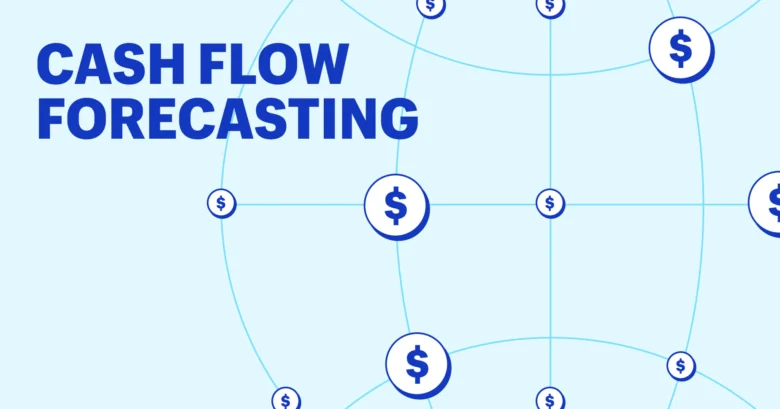One of the most important aspects of running a successful business is developing a cash flow plan. It helps entrepreneurs plan for future expenses, avoid financial problems, and plan for expansion by gaining insight into cash inflows and outflows. Even profitable businesses can face cash flow challenges without reliable forecasts, which can hinder strategic investments or smooth operations. By understanding how to use effective cash flow forecasting methods, businesses can meet their financial responsibilities, maintain stability, and make informed decisions.
The Importance of Cash Flow Forecasting
Cash flow forecasts are important because they show how a company’s financial situation changes over time. Income statements and balance sheets reflect a company’s past performance, while forecasts look into the future. Business owners can address situations of surplus or shortage of funds by predicting cash inflows and outflows. Behavioral economics shows that people often don’t consider what problems they might face in the future or whether they can manage their resources effectively. Forecasts enable businesses to take action before events occur, protect their interests, obtain financing when needed, and avoid unforeseen circumstances that could harm their operations.
Understanding the Different Types of Cash Flow Forecasts
There are several types of cash flow forecasts, each with a different purpose. Short-term forecasts focus on cash flow over a day, week, or month and are crucial for meeting operational needs, such as paying employee salaries or suppliers. Medium-term forecasts typically cover three to twelve months and help develop investment plans and budgets and manage seasonal fluctuations. Long-term forecasts can extend beyond a year and assist in making important decisions, such as expansion, launching new products, or taking out large loans. Behavioral research shows that business managers can set more realistic goals and make fewer mistakes when they break forecasts down into shorter time frames.
Getting the Right Data for Forecasting
Reliable and timely data is essential for accurate forecasting. Business owners should track historical sales, expenses, outstanding payments, monthly invoices, and seasonal trends. Understanding past cash flow changes helps better predict future trends. Behavioral finance suggests that people often make poor decisions based on recent events or wishful thinking. Using accurate data and objective assumptions ensures that forecasts reflect reality and provide useful information.
Effectively Forecasting Cash Inflows
Sales, loans, and investments are just a few ways a business generates cash inflows. To accurately estimate cash inflows, you need to review past customer payments, historical sales data, and anticipated new contracts or revenue streams. When forecasting cash inflows, businesses should consider seasonal demand, market conditions, and economic circumstances. Behavioral economics suggests that people often overestimate their income or their ability to pay all sales proceeds. Conservative forecasts help businesses avoid cash outflow problems and maintain their financial strength.
Accurately Monitor Cash Outflows
All business expenses, such as salaries, rent, utilities, supplier payments, and loan repayments, constitute cash outflows. To forecast cash outflows, you must keep detailed track of fixed and variable costs. You should also include unexpected costs, such as equipment maintenance or emergency expenses, in your planning. Behavioral finance suggests that people typically don’t consider the cumulative effect of small, everyday expenses or the ultimate cost. A comprehensive and accurate estimate of cash outflows ensures that the company doesn’t suddenly face a cash shortage.
Using Scenario Planning for Better Forecasting
Scenario planning is a method to help businesses manage various financial situations by considering all possible outcomes. This involves generating three different cash flow scenarios: the best, worst, and most likely. Business owners can make informed decisions and develop contingency plans by analyzing the impact of different scenarios on cash flow. Behavioral economics shows that people tend to be overconfident when predicting the future. Scenario planning can help people overcome this bias, enabling them to think flexibly and prepare for the unknown.
Review and Update Forecasts Regularly
Cash flow forecasts can’t be created once and then ignored; they must be continuously monitored and updated regularly. Changes in the business environment, shifts in customer payment methods, and unforeseen events impact cash flow. Regular review allows plans to be adjusted based on real-time data and emerging trends. Behavioral research shows that timely feedback helps people make better decisions and correct mistakes before they become serious. Updating forecasts helps organizations remain flexible and responsive, which is crucial for effective cash flow management.
Use Technology to Improve Forecast Accuracy
With the help of technology, cash flow forecasting can be more accurate and efficient. Automation tools, accounting software, and financial dashboards can help you track cash flow, view historical trends, and create forecasts. Automation reduces human error, saves time, and provides real-time information about your financial situation. Behavioral research shows that technologies that simplify tedious tasks help people adopt effective practices and apply them consistently. Business owners can use technology to make data-driven decisions and monitor changes in cash flow.
The Benefits of Accurate Cash Flow Forecasting
Accurate cash flow forecasting offers numerous benefits. It helps organizations avoid cash flow problems, develop growth plans, and make informed investment choices. Forecasting can also help you build better relationships with lenders, investors, and suppliers by demonstrating your planning capabilities and financial stability. Behavioral economics suggests that reducing uncertainty can alleviate stress, allowing decision-makers to focus on long-term goals instead of grappling with short-term problems. Companies that excel at forecasting are better able to address problems, seize opportunities, and achieve long-term success.
Conclusion
Cash flow forecasting is crucial for any business that wants to grow and remain stable. Business leaders can manage cash flow by understanding different types of forecasting methods, obtaining the right data, accurately predicting cash inflows and outflows, and utilizing scenario planning. Regular updates, technological applications, and sound assumptions all contribute to improved forecast accuracy and provide a solid foundation for decision-making. When companies understand how to forecast cash flow, they can fulfill their responsibilities, invest confidently, and build a robust financial future, even under unpredictable circumstances.
FAQs
1. What is cash flow forecasting?
Cash flow forecasting involves calculating a company’s future cash inflows and outflows so the company can plan for future expenses and revenues.
2. Why is cash flow forecasting crucial for businesses?
It helps maintain adequate cash reserves, aids in planning, helps you make informed investments, and ensures financial stability.
3. How often should you update your cash flow forecasts?
You should review and update your forecasts regularly, at least weekly or monthly, to ensure accuracy.
4. What technologies can help you forecast your cash flow?
Automated tracking systems, financial dashboards, and accounting software can improve the accuracy and efficiency of forecasts.
5. How does scenario planning help you forecast your cash flow?
Scenario planning helps businesses prepare for various financial outcomes, reducing risk and developing contingency plans.




